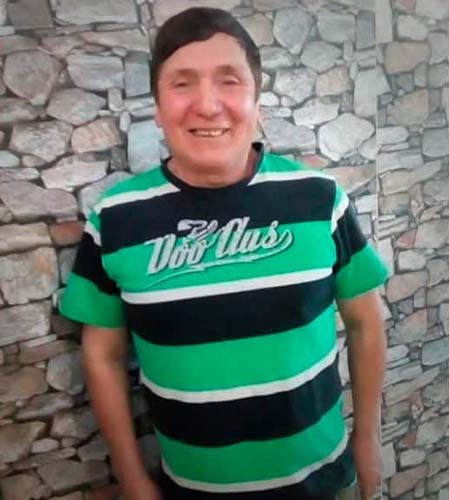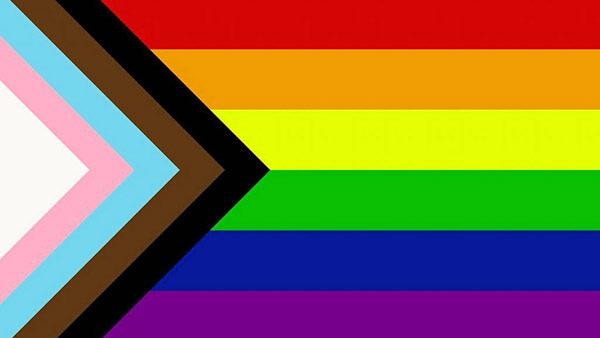In early June 2019, news began to break concerning the death of a Salvadoran transgender woman, Johana Medina León, of pneumonia, four days after being released from nearly six weeks in ICE custody. Before long, my Facebook feed was filled with stories detailing the persecution Johana faced in El Salvador because of her gender identity; her dangerous journey to the United States to seek asylum; and her final moments as she struggled to save her own life, as it became clear no one else would. She might have saved her own life, if she’d been given the resources. In El Salvador, Johana was a nurse. Johana’s death is tragic for many reasons, not the least of which is that had it not been for social media, it likely would have gone unnoticed.

Johana Media León (Photo credit: Diversidad Sin Fronteras
As social media has become ubiquitous, it has transformed not only into a tool for communication and sociality, but for bearing witness to events, experiences, and people from which we were previously isolated. But what does it mean to bear witness online, and what can thinking about social media as a tool for bearing witness bring to the field of queer STS? What can we learn from the faceless algorithms that curate our content about interpersonal connections we may not initially see?
Johana’s death comes at an especially difficult moment in US queer history, as our leaders take steps to remove trans people from the military, prevent adoption by same-sex parents, and even prohibit the raising of the pride flag at US embassies. Nonetheless, LGBTQIA+/Queer migrants continue to risk their lives to request asylum, based on the idea that even if their rights are being systemically challenged here, they are still better off than in the situations they are leaving. In the case of Johana, she was right; her “positive credible fear finding,”—which would have allowed her to eventually receive asylum—had been handed down two weeks before, but was for unknown reasons still held at the detention center until shortly before her death.
Bearing witness transnationally
Unfortunately, Johana’s was one more in a long string of queer and trans deaths that have recently dominated my Facebook feed. As a scholar of the Chilean trans movement, I have watched from afar in horror as Chilean activists have responded to a recent wave of hate crimes—including verbal and physical attacks—against their community. Despite Chile’s passage of an LGBT inclusive anti-discrimination law (2012) and the recent passage of a gender identity law (2018), Chile’s LGBTQIA+ community has witnessed a sharp increase in anti-queer attacks in the last several years, including earlier this year, when at least 4 attacks were reported in one week, one of which resulted in the death of 64 year old Alirio Andrade Almonacid. This pattern is hardly unique to the US or Chile; anti-queer violence is on the rise worldwide, and for the first time in human history, we have the ability to bear witness to this violence, often as it’s happening or immediately after. We can no longer think of incidents like the death of these two queer Latinos, thousands of miles apart, as unrelated.

Alirio Andrade Almonacid (Photo credit: Movilh)
In the early days of Web 2.0, much was made of the potential of social media to unite us across borders (Costanza-Chock, 2008; Harlow & Harp, 2011), building communities without the need for physical contact. To some extent, it has done exactly that. However, in other ways, it has served to show us the darkest sides of ourselves, and has arguably helped to sow the deep division that currently defines many aspects of our world. These technologies do not distinguish between facts and misinformation; social media companies rely on underpaid, overworked, and fallible humans to police an astronomical amount of content based mostly on their own judgment; they have helped to create spaces where hatred thrives, unchecked and unchallenged.
Nonetheless, as the deaths of Johana, Alirio, and countless other queer people around the world remind us, social media also allows us to bear witness to these atrocities and understand them as connected, part of a global system that punishes “the other.” In this way, social media transcends (most) borders, giving us a sense of “being there,” even as we observe events from thousands of miles away. It should remind us as LGBTQIA+/Queer people that although we may not call ourselves the same names or always agree with each other’s tactics, trans- and homophobia are not nationally or culturally-bounded phenomena, and thus neither can the work be that seeks to end them. Moreover, as we are reminded in the case of Johana, transphobia cannot be separated from the racism, xenophobia, and misogyny that also contributed to her suffering.
Our Facebook, Twitter, or Instagram feeds—overflowing with terrible news like Johana’s death at the hands of ICE, juxtaposed with the beating of a young lesbian couple in Chile, and topped off by the Trump administration’s recent announcement of even heavier immigration arrests in the coming weeks—must also remind us of the need for intersectional (Crenshaw 1991) queer activism. While marriage equality has changed the lives of many queer people for the better (in the interest of full disclosure, mine included), social media allows us to see more clearly than ever where marriage has fallen short. Activists and allies share stories of people with disabilities who would lose their benefits if they married; of record numbers of LGBTQIA+ youth who have been made homeless; and of queer migrants, like Johana, who are systematically being denied basic, life-sustaining medical care.
Unfortunately, social media can also have an “echo chamber” effect, often exposing us to an indigestible amount of news related to our interests and/or identities. The recent tech-driven obsession with constant connectivity has resulted in a feeling—especially for marginalized people—of being constantly bombarded with terrible news. Therein lies the other danger of social media. Do we simply log off? Do we share some—but not all—the information we’re presented with? Does the constant stream of news, petitions, and testimonials we share on social media inure us to actual, offline violence? While I am generally skeptical of critiques of so-called “arm-chair activism” or “slacktivism” (Cabrera, Matias, & Montoya, 2017; Jones, 2015), it is increasingly clear that simply sharing news on social media is not enough (though I emphasize, it is extremely important.)
Queer Cartographies
Rather, I hope we can reinvigorate some of the early dreams for social media, allowing us to connect and build community with people we may never meet in person. Rather than surrendering to the seemingly constant flow of bad news across our screens, what would happen if we were inspired by the very algorithms used to categorize our content to reimagine what the LGBTQIA+/Queer community can look like? What if we participated more actively in this feedback loop, taking cues from suggested articles and friends, posts from friends of friends, and even targeted ads to rethink our connections to one another? In the age of social media, how can we grapple with being constantly reminded of the inequality faced by LGBTQIA+/Queer people around the world when the causes of so much misery seem systemic and out of our grasp?
More than anything, we ( ‘we’ here is a person with both the knowhow and the resources to access social media) can no longer claim ignorance. We—especially those of us most privileged within the community—can no longer tolerate offhand statements about the “inherently” queerphobic nature of certain countries and regions, while ignoring the US’ abysmal history of violence against queer people; we can no longer separate the epidemic of police brutality against Black people and other POC in the United States from increased police presence at Pride celebrations across the country; we can no longer accept events held by and for our community that do not meet basic accessibility standards; and we can no longer pretend that trans and non-binary issues are categorically separate from those that affect gay, lesbian, and bisexual communities. I propose that we might think of social media, despite its many ethical problems, as a kind of queer cartography, demonstrating and bringing into being the possibilities for a kind of queer connection that both learns from and looks beyond the algorithmic. That is, we might come to understand ourselves as deeply connected—as social media already knows we are—along unexpected axes, and take up the issues facing LGBTQIA+/Queer people around the world as our own. Whether we read, share, like, retweet, donate money, or start a petition, this affective orientation to each other requires us not only to bear witness; it requires concrete action.

The “Progress” pride flag, centering the inclusion of marginalized communities within the queer community. Design by Daniel Quasar.
Johana Medina León’s death was not the first death as a consequence of ICE detention, and it will almost certainly not be the last. Alirio Andrade was not even the last queer Chilean to be attacked that week. While social media has no doubt helped to publicize cases like these, which would otherwise likely have been swept under the rug, these technologies can be crucially important to social justice fights in other ways as well. The juxtaposition—by a faceless algorithm—of their deaths with news of other queer-phobic attacks in our communities and in distant parts of the world, lays bare the logics of racism, misogyny, and queer-phobia that continue to oppress LGBTQIA+/Queer people and other marginalized groups around the world. Despite its many limitations and ethical dilemmas, social media—taken as an inspiration for new kinds of queer sociality—can be part of the solution.
References
Cabrera, Nolan L, Cheryl E Matias, and Roberto Montoya. 2017. “Activism or Slacktivism? The Potential and Pitfalls of Social Media in Contemporary Student Activism Activism or Slacktivism? The Potential and Pitfalls of Social Media in Contemporary Student Activism.” Journal of Diversity in Higher Education.
Costanza-Chock, Sasha. 2008. “The Immigrant Rights Movement on the Net: Between ‘Web 2.0’ and Comunicación Popular.” American Quarterly 60 (3): 851–64.
Crenshaw, Kimberle. 1991. “Mapping the Margins: Intersectionality, Identity Politics, and Violence against Women of Color.” Stanford Law Review 43 (6): 1241–99. https://doi.org/10.2307/1229039.
Harlow, S. 2012. “Social Media and Social Movements: Facebook and an Online Guatemalan Justice Movement That Moved Offline.” New Media & Society 14 (2): 225–43. https://doi.org/10.1177/1461444811410408.
Jones, Cat. 2015. “Slacktivism and the Social Benefits of Social Video: Sharing a Video to ‘Help’ a Cause.” First Monday 20 (5). https://doi.org/10.5210/fm.v20i5.5855.
